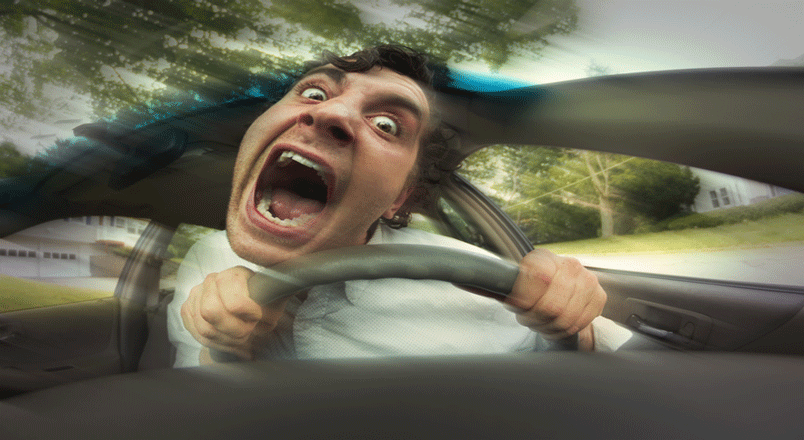We all have pressure in our life. But some days our patience
is tested more than others; frustration surrounding the circumstances
of perhaps a family fall out, an issue at work, a traffic jam and the
pressures of being late, all are contributory factors as to what comes
next.
Add to this the actions of others on the road, excessive
speeding, tailgating, light jumping, horn sounding, weaving in and out
of lanes can easily culminate in a driver "exploding" with anger.
For far too many people pent up emotions are vented when behind the wheel.
It is so common that it has a name "Road Rage".
Road rage has been recognised as one of the leading causes
of vehicle collisions and violent confrontations between motorists. Of
course there are different levels of rage, some are able to contain themselves
with a quiet grumble to themselves, others may gesture graphically, shout
abuse but for some, such actions can escalate into direct damaging contact.
There is no doubt road rage has exceptionally dangerous consequences.
If a driver is frustrated, stressed or angry getting behind the wheel
of a vehicle it is the wrong place to be.
So this begs the question, what is it that happens to a normally
mild mannered, pleasant, responsible individual once they are behind the
wheel and someone commits a driving error or performs an aggressive act
against them?
The answer is simple, personality and behaviour. To a large
extent personality can be considered as a metric to the thresholds at
which a driver is likely to display a particular behaviour.
Drivers of vehicles are human; as such they are prone to
errors of judgment, fatigue, inconsistency, distraction, emotion or a
plain old making a mistake.
Part of the issue is the driver of a vehicle is faceless.
An example might be, two pedestrians walking on a narrow pavement, bump
into each other, this doesn't often result in rage, more often than not
it is an apology by one or both and they continue on their way.
So why is there so much intolerance towards another vehicles
driver's act of bad manners, abuse, aggression or incompetence? It is
suspected that because the vehicle is seen as faceless, the normal facial
signals and interpretations of intent, which for millennia are the indicators
to appropriate and measured response are non-applicable.
There are two scenarios;
Stressed drivers
Drivers having imposed restrictions of speed, lane discipline, direction,
signs, other vehicles and traffic signals are recognised to increase stress
levels within the car, meaning that any non-related "life stress"
is compounded whilst driving. The intolerance comes from being pushed
beyond the individuals stress threshold.
King of the road
This group are generally aggressive, feel it is their duty to expose and
educate other drivers in the error of their ways, they become vigilantes,
ready to instantly hunt down and inflict retribution on those that are
in their way or make an mistake.
If you have made a driving error, it is best to self reflect
positively about what happened and why, then make a conscious effort to
avoid it happening again.
The secret to a good driver is not to let any situation escalate into
conflict, no matter how wronged you may feel.
Just remember, getting to the chosen destination is
far better than having an altercation or life changing incident.
|



